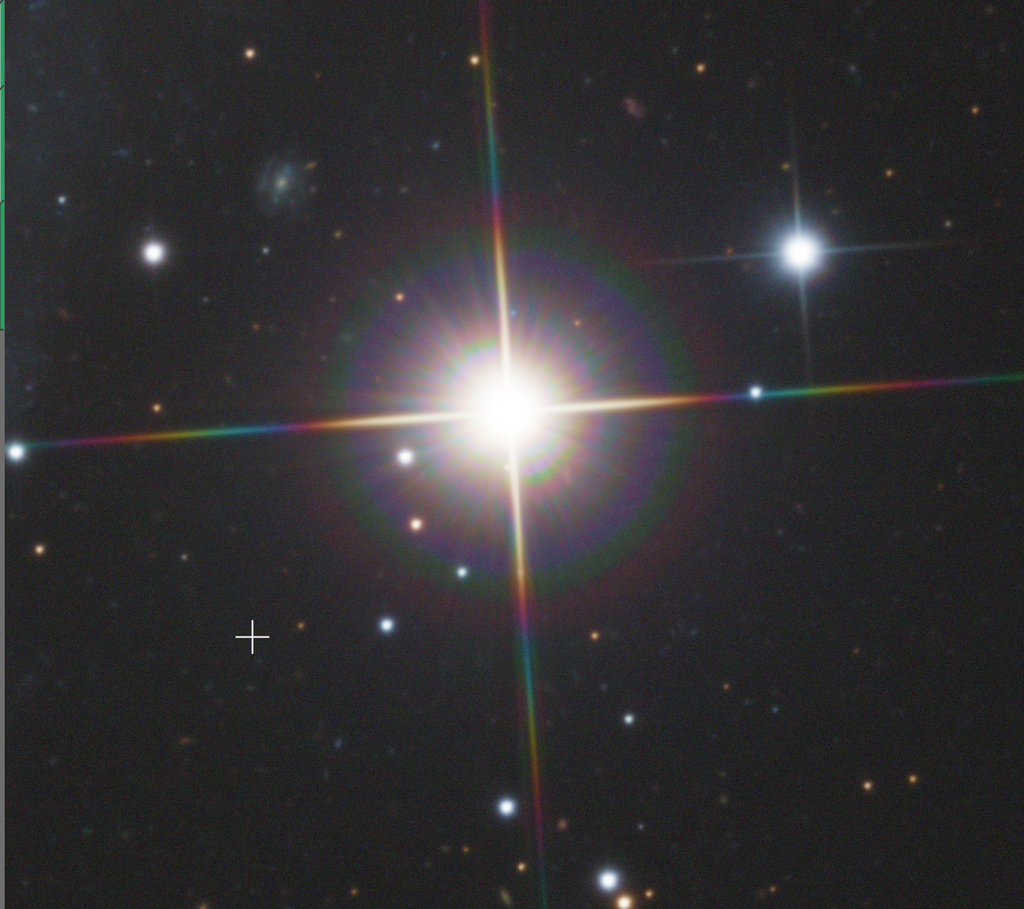I will preface this by stating that I am not looking to bash a vendor here, merely share a recent experience which could assist those who are looking to make costly purchases. I have had many mixed emotions regarding this ordeal, but will attempt to keep this respectful. I also invite others who have experienced the same issues to chime in.
In early October 2024 I was in the market for a set of 50mm unmounted filters to pair with a QHY600M camera and an Astro-Physics 110GTX refractor / 110TCC reducer for widefield imaging. After doing much research on user opinions and experiences, it appeared that Astronomik filters had a strong reputation for good performance, and were backed by a halo free warranty. This warranty is really what sold me over buying another budget brand which makes statements that they do not offer returns for filters that produce halos (Antlia). I figured my purchase was quite low risk based on the very limited user reports of halos with Astronomik filters and the company's openess and willingness to apparently stand behind their product with a 10 year warranty. So I went ahead and purchased direct from Astronomik. At the time, this also saved me a little money versus buying from a local vendor, but in retrospect this was a mistake.
Upon receiving the filters in mail I noticed that the Green filter had a strange circular blemish on the glass and that the L2 filter had a small scratch near the edge:
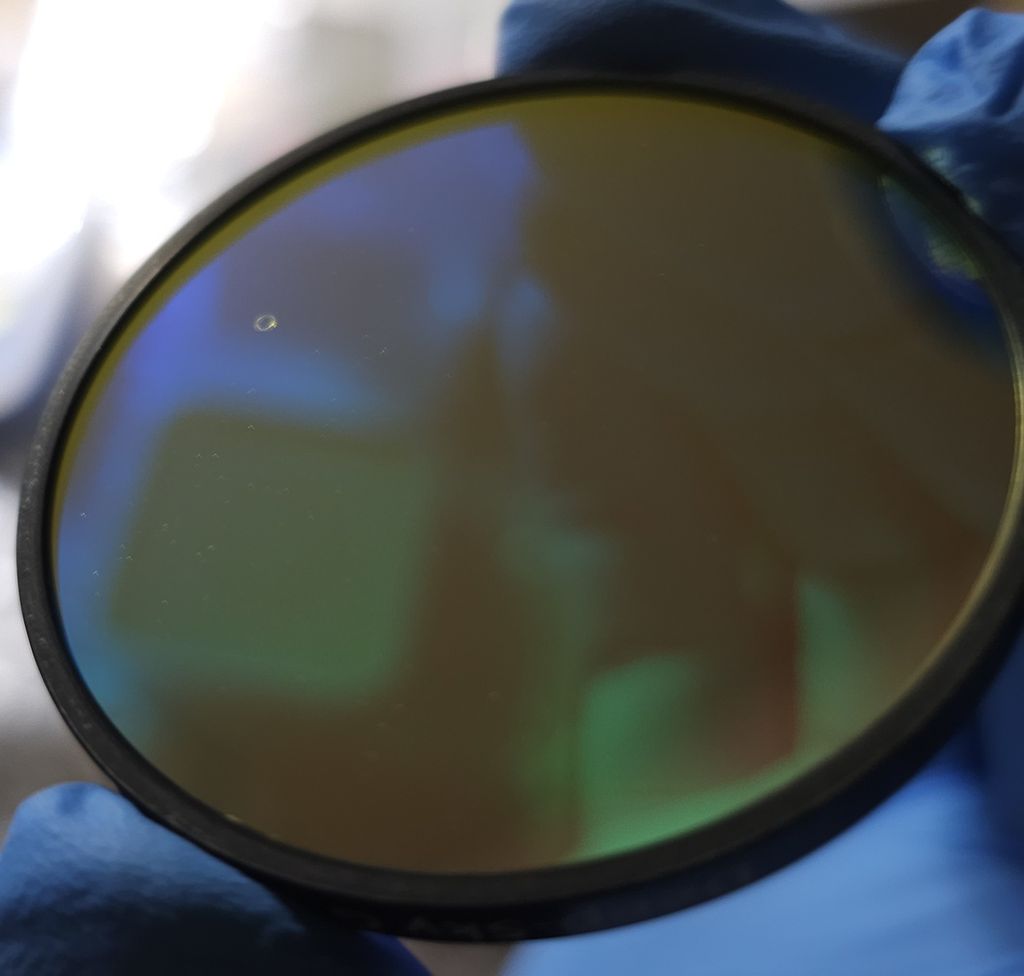

I contacted Astronomik and they promptly requested to try cleaning the G filter with some water and cotton. Thankfully, the blemish was removed with some iso alcohol and kimwipes. Astronomik also promptly sent out a replacement L2 filter. Within a week I was ready to install the filters and get on to imaging!
Upon first light on M45, I noticed something that I was honestly not expecting: there were very obvious halos showing on the G and B filters:
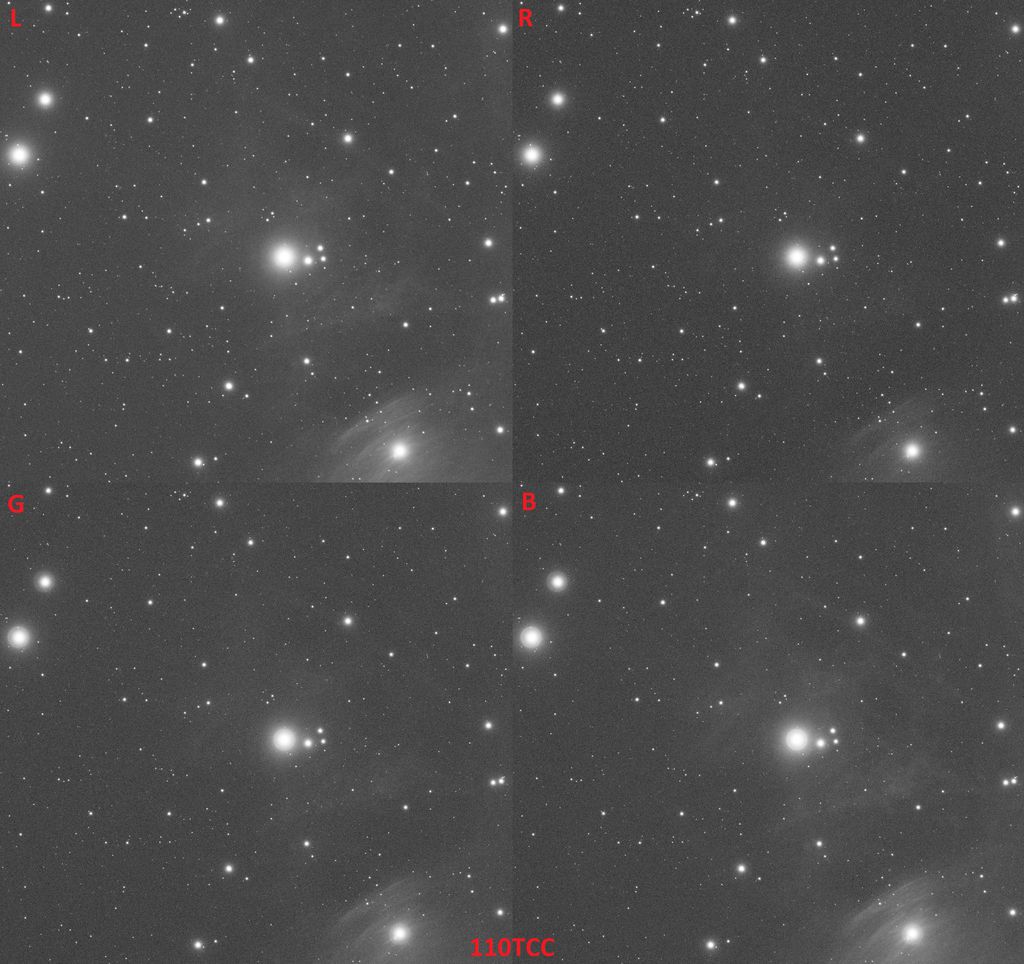
After seeing this, I tested the rest of the filters. It appeared that R had the very slightest of halos, that I would not have otherwise recognized if I had not seen those in G and B. L2, and SHO filters showed no halos in my test images.
I tried flipping the filters as I have read that sometimes orientation can eliminate halos, but it did not make a difference. So I contacted Astronomik again shared the issue I had come across and provided the data. It is now early November time frame. Astronomik replied and stated that they believe the issue is the 110TCC reducer interacting with the filters that is causing the halos. They state that they have another customer with the same camera and telescope/reducer showing the issue, and that they will look into the issue.
At this time I had tracked down another user of the 110GTX and Astronomik filters here on Astrobin, and asked them how their LRGB images were looking since I only noticed them using Astronomik SHO. They replied that they too had the same ugly halos for G and B, and that they were in contact with Gerd who was giving them the runaround.
In the meantime, I decided to try the 110FF Field Flattener for the 110GTX to try and rule out the 110TCC reducer as the culprit. Sure enough, it as well showed halos:
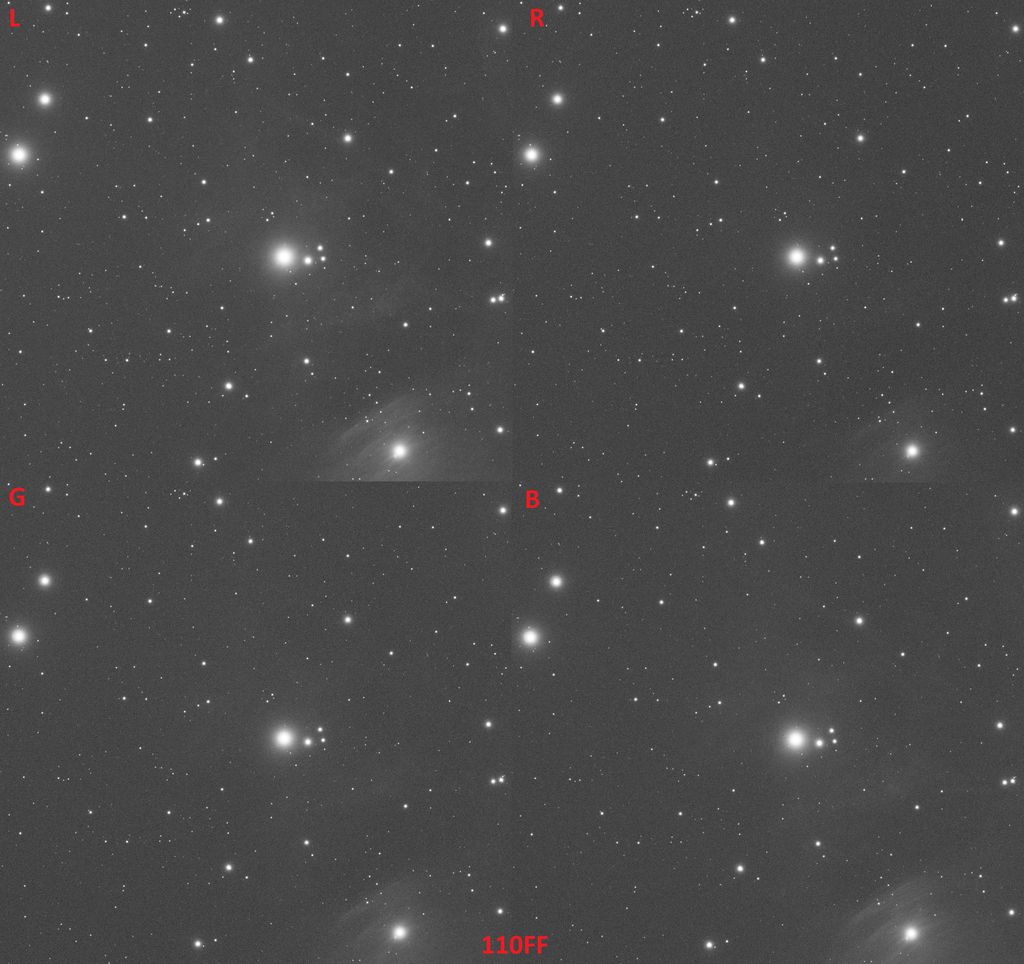
I sent an email to Astronomik relaying the info from my experiment. They eventually responded that they are trying to investigate a new coating process to solve the issue, but it is very difficult due to this being associated with using a niche piece of gear. Again they pointed the finger at the Astro-Physics glass.
Given that there were some periods of no response after my emails, I decided to continue my investigation.
I removed any reducer/flattener at all and instead connected only the camera/filterwheel to the 110GTX telescope using extension tubes, to rule out any interaction with correcting glass near the filters as the culprit. The halos still appeared:

I sent this data to Astronomik for review. I did not hear back about it.
The next night, I placed the camera/filterwheel on my trusted 10" F/4 Newtonian and Paracorr II, which is a known quantity to me that does not have halo issues when imaging with a set of (Antlia) mono filters. The halos still appeared, which to me absolved the Astro-Physics glass.
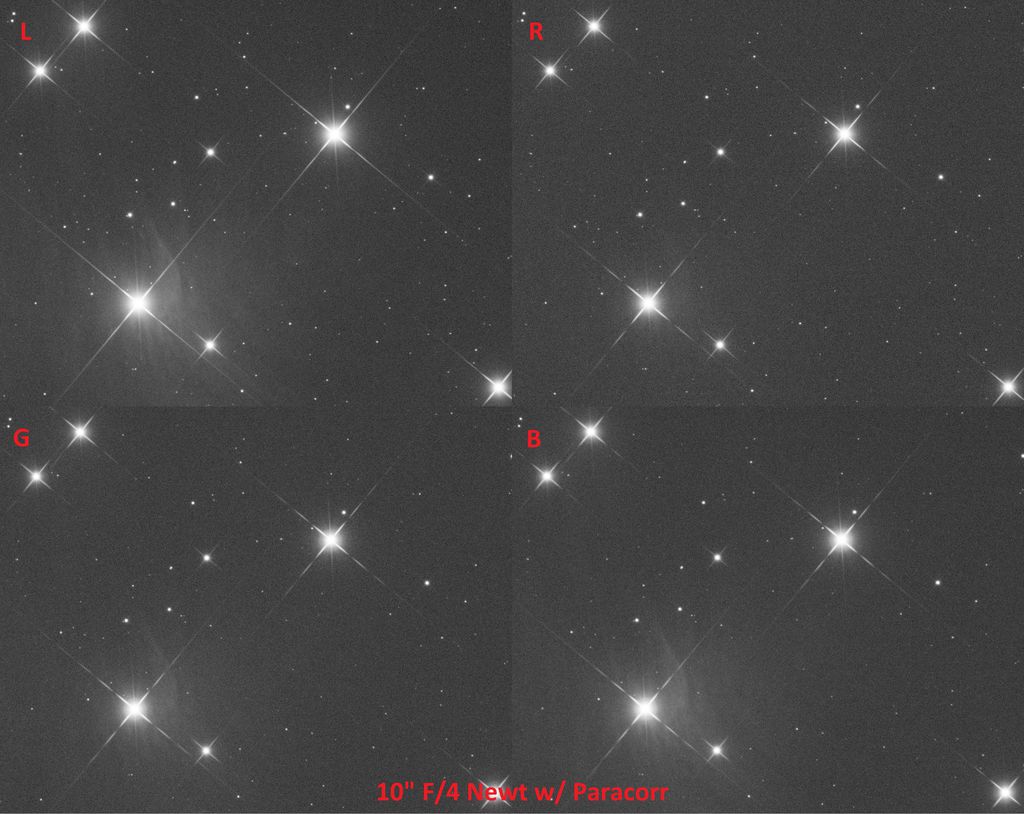
I as well sent this data to Astronomik for review. I did not hear back about it.
It is now mid December and I really just want to get on with imaging if possible. After much thought, I decided to buy a new set of Chroma LRGB filters to see if they too show halos with my camera and rig.
To my relief, using the new Chroma LRGB filters showed no halos present where the Astronomik's had:
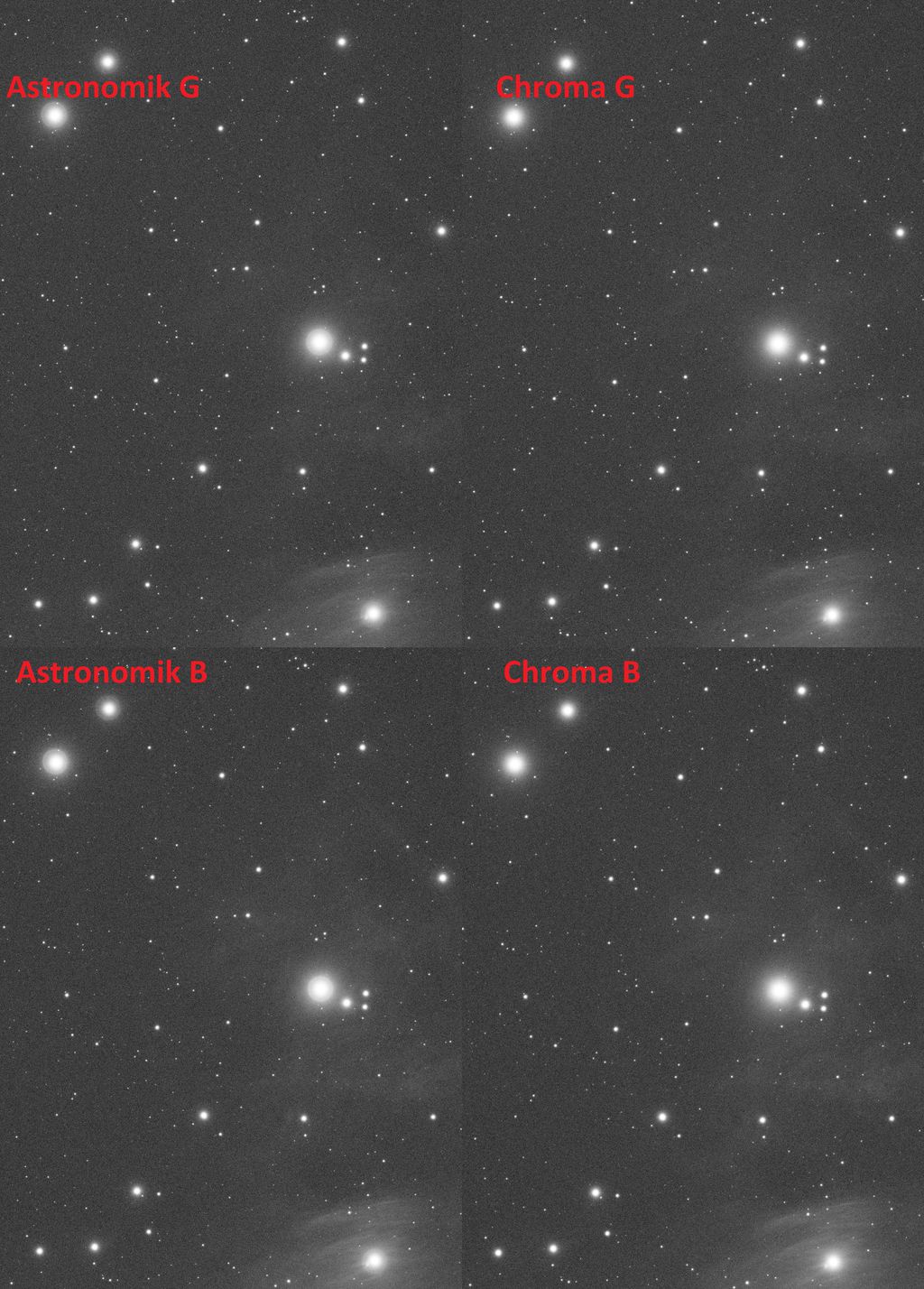
It was a relief to finally have all of the evidence pointing to Astronomik's filters themselves as being the cause of the halos in my images, and that I had a filter set I could rely on to image with!
I sent this data to Astronomik, hoping to maybe open their eyes to the possibility that their filters may actually be to blame and that perhaps there could be a QA issue in their fabrication lab since this appeared to contradict reports of their great performance. I did not hear back.
Instead, one day I randomly got a shipping notice from Astronomik, which I assumed were the replacement filters mentioned previously in an email. I am expecting to receive at least an RGB set as a replacement, but instead only received B and G filters. This would be fine... but the new filters came with a curious "XT" designation. From Astronomik's website, it appears that instead of the normal 1mm thick filters, XT filters are 0.3mm thick!
Upon testing, the XT filters do initially appear to be an improvement from the originals, however they still show a slight halo though it is more tight and embedded within the star's light scatter:
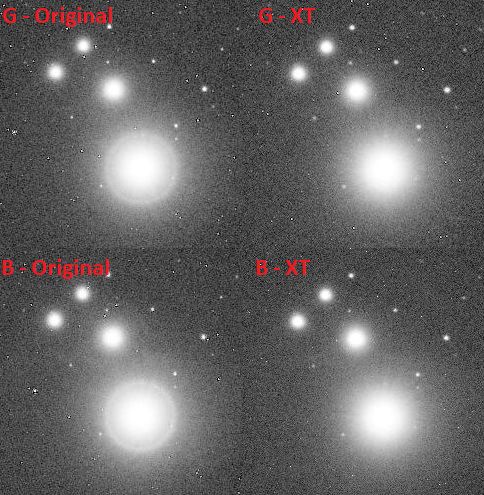
Note that halos arising from internal reflection within a piece of glass have a diameter that scales down with smaller glass thickness, which matches the data.
Glass_Thickness = [(Halo_Diameter * F_ratio) / 2 ]* 1.5
I am not sure where this formula is originally derived, and received it from the other user who had been dealing with these halos as well. Using it I found that in each image the formula pointed to a piece of glass approximately the thickness of the filter that was in place, either 1mm or 0.3mm.
So, even though the XTs may improve on the original's halo issues, they are a completely different thickness which makes them far from parfocal with the other Astronomik filters, and also require different backfocus spacing compared to the other Astronomiks that are 1mm thick. Also it makes me wonder if them sending me thinner filters was just an attempt to make the halos smaller and hope they would be less noticeable?
I promptly sent Astronomik data from my experiment as I usually did and requested a return.
Finally after some time, in late January Astronomik admitted that they were at a loss as to why my filters are showing halos for myself and some other customers with the same equipment, and they agreed to take back the Deep Sky RGB filters (and XT replacements) for a return. I then requested to return the L2 and SHO filters as well, but they refused stating that there is nothing wrong with them and that I could still use them.
Because filter thickness is critical on a relatively fast full frame imaging system, I cannot use the L2 and SHO filters unless I use them with other 1mm filters.
It is one thing to have a defective product, and not know what the issue is, but a company should also be evaluated on how they handle when their products fall short. I appreciate that for most imagers these filters have provided a great value proposition and many have tested well in the field. But when the filters do not test well, it is clear how Astronomik will handle it: offer a refund on the cheaper part of the set and let the customer eat the financial loss of return shipping and selling the remaining set of filters at a loss.
I appreciate that Astronomik did respond to my inquiries, albeit at a frustratingly slow pace, and that they at least made an attempt at producing some kind of replacement. However I feel compelled to share this story, at the very least to encourage others to purchase from a dealer who would be willing to accept back defective product in a prompt manner.
Thank you for coming to my TED Talk.
-Joey


